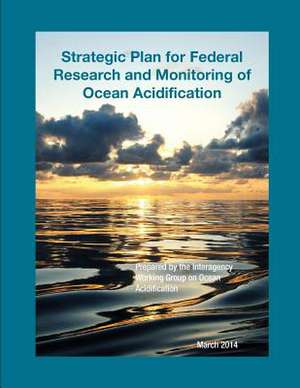Strategic Plan for Federal Research and Monitoring of Ocean Acidification
Autor National Science and Technology Council, Interagency Working Group on Ocean Acidi, Subcommittee on Ocean Science and Technoen Limba Engleză Paperback
Preț: 87.10 lei
Nou
Puncte Express: 131
Preț estimativ în valută:
16.67€ • 18.12$ • 14.01£
16.67€ • 18.12$ • 14.01£
Carte disponibilă
Livrare economică 01-15 aprilie
Preluare comenzi: 021 569.72.76
Specificații
ISBN-13: 9781507582251
ISBN-10: 1507582250
Pagini: 88
Dimensiuni: 216 x 279 x 5 mm
Greutate: 0.23 kg
Editura: CREATESPACE
ISBN-10: 1507582250
Pagini: 88
Dimensiuni: 216 x 279 x 5 mm
Greutate: 0.23 kg
Editura: CREATESPACE
